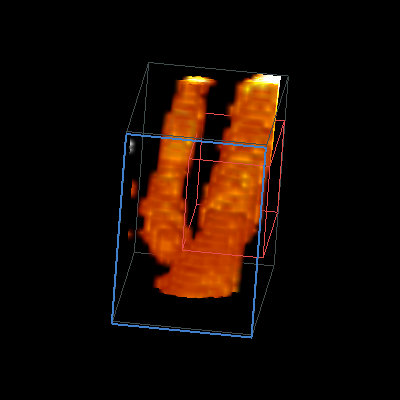Having
played with the Picaxe microcontroller, it was time to expand my
realm. The Arduino is an inexpensive open source microcontroller
system. This is a natural transition from the Revolution
Education Picaxe devices. While I didn't relish having to learn a
new toolset, the more substantial capabilities of the Arduino were
enticing enough to warrant the change. But before you think that
the Arduino will get you to microcontroller nirvana, here are some
advantages and disadvantages of each system. The bottom line is
that both systems are very appropriate for certain tasks, and not so
for others.
Parameter
|
Arduino
|
Picaxe
|
Education
|
Like any most open
source projects, much information is available, but it can be a bit
overwhelming for the novice to know where to start. A few good
tutorials are at: ladyada.com and arduino.cc.
|
Revolution Education
provides three very consistent and well written manuals. These
are a wonderful source of organized knowledge for those just getting
into the field.
|
Cost
|
A base AtMega328
costs about $6. If you purchase this with a printed circuit
board, header, and minimum components for easy in-circuit programming,
it will run you about $12. Good sources for purchasing are:
wulfden.org, moderndevice.com, ladyada.com, and arduino.cc among others. You will still have to have a supply of strip-board or perf board to build on.
|
A Picaxe 08M cost
about $3. If you purchase this with a proto-board, headers, and
if you required components for easy in-circuit programming, it will run
you about $11. Good sources for purchasing are: phanderson.com, and wulfden.org |
Required soldering skills
|
Soldering an Arduino
board is usually moderate difficulty due to the number of pins and
compact design. Some of the kits even have a surface mount device
to be attached which is definitely advanced material.
|
Peter Anderson's boards are very easy to solder and leave plenty of space for prototyping simple circuits.
|
Computing capabilities
|
The Arduino has
great processing ability. Because it runs compiled code at 16
MHz, instructions can be executed in hundreds of nanoseconds. It
runs floating-point code, and has plenty of RAM (2 kB) and ROM (32 kB
of FLASH and EEPROM). You could make everything from a neat
flashlight to a self balancing robot with this chip.
|
The Picaxe is rather
limited. It runs interpreted code at 4 MHz, resulting in timings on the
order of microseconds. There is no floating-point ability, and as
I add features to my devices, I almost always end up rewriting code to
scrounge a few extra bytes. The fact that the manufacture
squeezes an entire BASIC interpreter into the PIC bootloader still
amazes me, though it does put this chip at a disadvantage for
performance.
|
Programming interface
|
The Arduino is
programmed in pretty standard C using a programmer's editor. The
integrated development environment (IDE) helps compile and download the
code to your device with just a few mouse clicks. In my
experience, the error messages are pretty primitive and not always
accurate. I can't wait for this IDE to evolve into something as
slick as NetBeans someday (or maybe, for someone to build a Wiring
module for Netbeans or Eclipse)... but for now this simple IDE does
allow you to get the job done.
|
The IDE can be
programmed in a text editor, or using an included graphical interface
which allows you to draw flowcharts. This is helpful for kids or
novices just learning to program. The IDE also includes a
simulator which allows you to test your code without having any
hardware attached. Variables are restricted to a predetermined
number of byte and short integer types in the Picaxe IDE, which can
crimp your style if you are an experienced programmer. The IDE
makes device dedication, and program download very easy, and even
identifies the attached Picaxe chip if you're not sure what it
is. Error messages are not always accurate in the IDE.
|
Power requirements
|
My one real pet
peeve with the Arduino is that it doesn't have good power saving
features available yet. The price for faster processing is higher
power consumption. It seems to draw about 9 mA during normal
operation without a load. Supply voltage is between 2.5 and 5.5
V. This isn't much, but since I build a lot of solar projects, it is an
order of magnitude more than I would have hoped. Changing the
crystal oscillator should help, but I don't even see commands to cut
power consumption built into the library. 9 mA is still pretty
small and a typical battery powerpack might provide a weeks worth of
power if you don't waste it in the linear voltage regulator. If
you are not building solar projects, and don't mind a conventional
on-off switch, then this issue may not matter.
|
The Picaxe excels at
low power applications. I usually don't put an on-off switch on
my projects, because the chip can easily be placed in a low power mode
which draws less than 1 mA. Supply voltage is between 2.5 and 5.5
V. The programming library allows you to reduce the clock
frequency in software, as well as disabling the brownout fuse, and
placing the chip in standby mode for timed intervals. Again,
unless you want to power your device with a small solar cell or
intended a small battery to last for months, you may not be as
concerned with power as I am.
|
This comparison was performed in 2009. Send me an
email when it gets embarrassingly out of date; especially if you have
some relevant updates!
Useful External Links:
|

